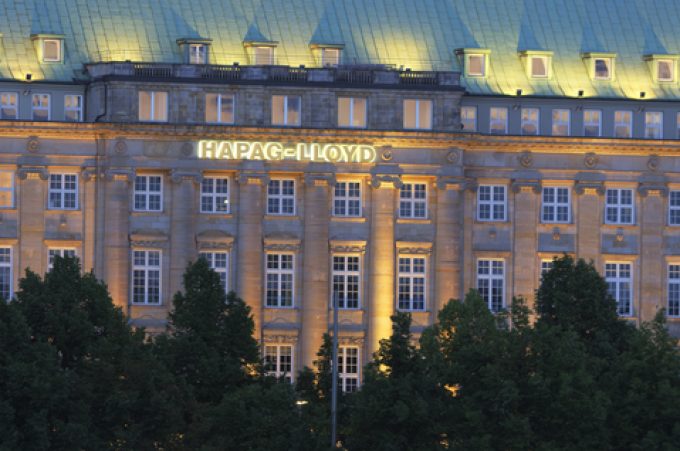Conf call redux: does Kuehne + Nagel know its toys from its teus?
Yo bro, where’s the growth?

Hapag-Lloyd’s net profit came in at $54m last year after the carrier recovered well from a loss-making first six months, which in June obliged it to issue a profit warning.
Chief executive Rolf Habben Jansen said the transport group was “satisfied with the financial results”.
In terms of its 3.8% ROIC (return on invested capital), the Hamburg-based liner trumped its bigger peers, CMA CGM and Maersk, in 2018. They reported disappointing ROICs in their accounts, of 2.6% and 1.6% respectively, for the year.
“The market environment in 2018 was certainly not easy,” said Mr Habben Jansen during an earnings call presentation this morning. But he added that in the second half of the year, bunker prices had eased at the same time as demand was strengthening, resulting in improved rates.
He said 2019 had started well, with “good utilisation” levels being achieved on its vessels across its network, and he had “no reason to believe any different” from its growth forecast of 3-4% for the year, which is above Maersk’s 1-3% guidance.
“Yes, we see spot rates sliding at the moment, but that is normal for the time of year,” he said.
“We still see over the quarter reasonable volume growth and a reasonable recovery from the Chinese New Year,” he added.
“While our business is and will remain cyclical, market conditions have gradually improved for liner shipping companies over the last few years. Our objectives are clear – improve earnings, further reduce our debt and create more value for our customers and for our shareholders as we strive to be number one for quality.”
Contracted rates from Asia to Europe have generally seen “mid to double-digit” increases, claimed Mr Habben Jansen, but he admitted that “not a lot had been closed” so far on the transpacific, which he expected would be agreed in the next six-to-eight weeks.
Most of the new contracts signed so far have either included Hapag-Lloyd’s MFR (marine fuel recovery) formulae or “a comparable customer-own bunker surcharge mechanism” said Mr Habben Jansen who reiterated that the fuel surcharge would be separate on all contracts, including 90-day short-term agreements.
“We need to get our money back on the short-term business as well,” he said.
A particular target for operational savings is the restitution of empty containers, which last year cost the carrier over $1bn.
“Nobody pays us for that,” he said.
Hapag-Lloyd said in its Strategy 2023 report that “strict customer orientation” was its new focus, and claimed that “size is not the game anymore”.
“We firmly believe that our customers are prepared to pay for added value and that our industry needs to change,” it stated.
Nevertheless, its trial of offering of premium faster transits on selected routes does not seem to have gained traction with shippers – Mr Habben Jansen conceded that he did not anticipate that express services would represent a “huge chunk of our overall business”.
And Hapag-Lloyd has no plans to follow in the footsteps of Maersk and CMA CGM in their integrated one-stop shop supply chain management aspirations. Mr Habben Jansen told The Loadstar at TPM that his ambitions for the carrier were for it to be a “pure liner”, and to “do that job well”.
However, the carrier has embraced the digital developments of the industry, with 350,000 teu having been booked via its online Quick Quotes application last year, representing around 7% of its total volume. It now has a run rate of 14-15,000 teu a week.
Hapag-Lloyd’s guidance is for an ebit result this year of €500-€900m, compared with the €443m of this year.
Comment on this article